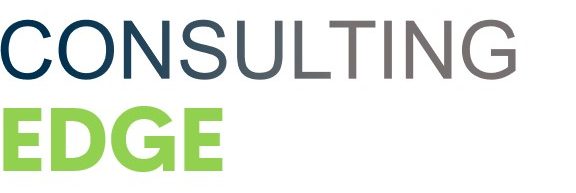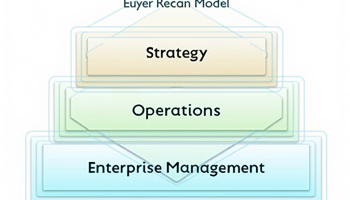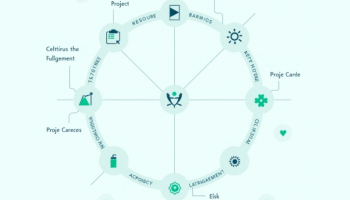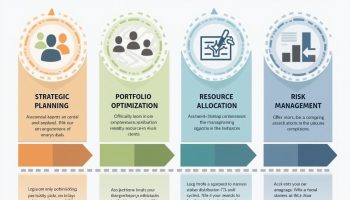Project management is a difficult task to tackle. But, with the right tools and understanding of what needs to be done, it can be managed. There are many different types of artifacts in project management.
Project management is a multifaceted discipline that addresses the needs of organizations and individuals.
These needs can be met through a variety of project management artifacts. It includes work breakdown structures, resource allocation matrices, risk assessments, task lists, and many others.
In this post, we’ll explore some common types of artifacts in project management.
What is Artifacts Project Management ?
Artifacts in project management are usable or valuable objects that result from a process or activity.
A work breakdown structure is a deliverable-oriented grouping of project tasks that organizes and defines the total scope of the project. It provides a foundation for scheduling, budgeting and cost control, resource planning, risk identification and analysis, and progress assessment. You can also use it to create overall project plans.
Types of project management artifacts:
In project management, there are many different types of artifacts. These include reports, charts, and graphs that give a visual representation of the progress status.
There is also a work breakdown structure to help define tasks and the relationships between them.
Task lists define what needs to be done and who will do it. Risk assessments help identify and evaluate the possible threats, while resource allocation matrices put together a budget and schedule based on resource availability and staff expertise.
Finally, there is a Gantt chart that can show where timelines intersect with each other for all projects involved in the same task or event.
The use of these tools helps to streamline the communication within your team. It also keeps everyone on the same page as far as what needs to be done next.
Scope of work:
Scope of work is an important part of project management.
The project manager can use a work breakdown structure to organize all their tasks and make sure they meet the right scope, are on time & under budget. The output should be engaging so it will keep readers interested.
A good example of this would be organizing a task list into subtasks and then linking those subtasks together on a Gantt chart. This allows your team to see exactly what needs to get done first, second, third, etc.
Project management plan:
A project management plan is more of a document that includes the project scope of work, risk assessment, task list, and many other important components.
It’s best to break your project into specific tasks so everything runs smoothly. These types of artifacts are useful in managing projects. Because you can use them for organizing timelines or showing how different aspects relate to each other.
For example, I’ve seen project managers use visualizations like Gantt Charts and Milestones so that everyone on the team knows what needs doing at any given time!
Project Schedule:
A project schedule is a graphic representation of the tasks committed to, planned, or underway. The best way for managers and coordinators alike can use Gantt charts in order to track timelines as well ensure that all deadlines are being met!
This helps to keep the project on track so it will be completed within budget and on time.
Hierarchy Charts:
Hierarchy charts are used to illustrate project structure. They show how different tasks and roles all relate to each other in a project management plan.
This allows the team to understand better where their work fits into the greater picture. It ensures that everyone has an idea of what they should be doing next.
Resource list:
A project resource list includes a list of resources needed to complete each task of a project. Resources include human resources, equipment, materials, or funds.
The project resource list includes deadlines for each project task and who is responsible for completing it. This can help with project management because it ensures that every task has the right amount of resources allocated to it.
Resource allocation:
Resource allocation is an important part of project management. Sometimes, a task requires multiple resources with different time constraints to accomplish work.
Project managers can assign responsibility for each task and provides the necessary resources needed to complete it – whether those are human or material. This will help your project stay on schedule and come in on budget.
Risk assessment and contingency plans:
A risk assessment is a project management plan that includes information on risks and the steps needed to be taken if those risks occur.
Risk plans can include both responses and contingency plans. Contingency plans are action items you take to prevent potential disasters from occurring during your project.
An example of this would be having an open line of communication with your team members so that they feel comfortable speaking up about any risk they see.
Quality assurance procedures:
Quality assurance procedures are a critical part of the process that you need to define at the beginning and throughout. This will ensure quality standards for your project from start to finish!
A quality assurance plan includes both internal and external processes that will help your project come to a successful conclusion.
An example of this would be having a set checklist for each task that is completed so it can easily be looked over and addressed if any errors are found. This prevents quality problems from occurring at the last minute.
Reports:
Project management reports can include a variety of information, such as timelines, task lists, issues, and project performance.
This allows people outside your team to see what you’re doing and how it all fits into the goals of the project. It helps customers, employers, or other teams know exactly what’s been completed.
How to use artifacts in project management:
To use artifacts in project management, think about your tasks and how they relate to each other. Here, you can use charts, diagrams, or other visuals to illustrate these connections.
You should break down each task so you have a better idea of what everyone’s role is and how it fits into the big picture. You can assign responsibility for each action item so nothing falls through the cracks.
Using the types of artifacts listed above can help you with project management. Because it allows you to keep track of all your deadlines, responsibilities, resources needed for each task, etc.
Make sure you include artifacts in your project management plan to help keep your team on track with the project.
Conclusion:
As you can see, there are many different types of project management artifacts. They all help streamline communication within teams as well as keep everyone on the same page.
Project management doesn’t need to be overwhelming. If you use the right tools and communicate with your team members, you can easily map out projects and stay on track for success.






